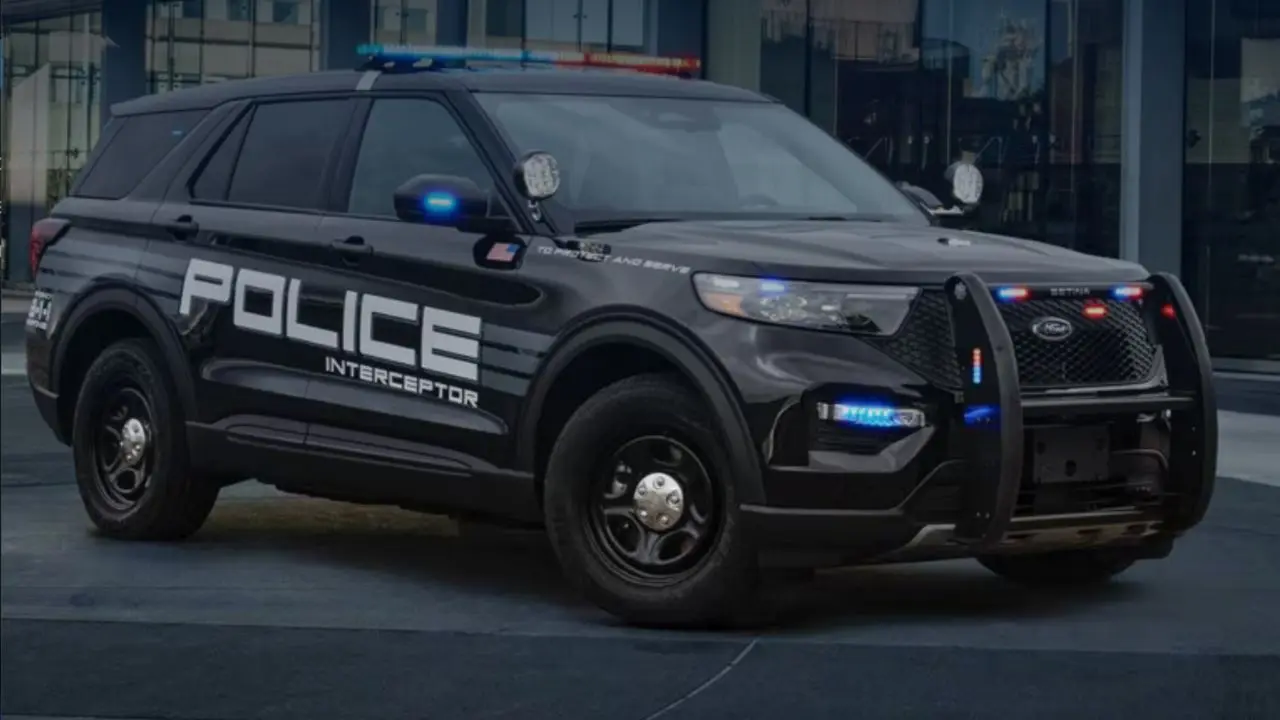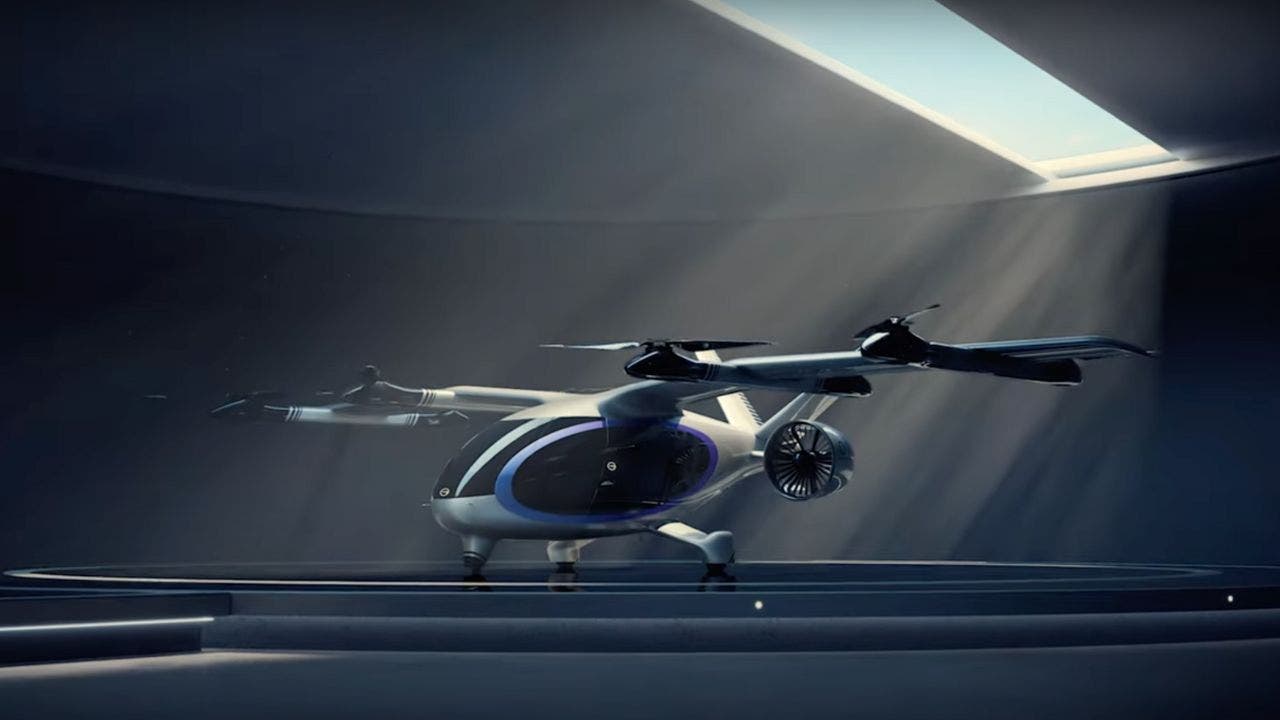Technology
Ford's new tech turns police cars into high-tech watchdogs

Ford Motor Company recently filed a patent application that’s raising eyebrows and sparking debate about privacy and surveillance on our roads. The patent, “Systems and Methods for Detecting Speeding Violations,” describes a system that could turn Ford vehicles into mobile speed detectors capable of reporting other drivers to the police.
The patent application was filed with the United States Patent and Trademark Office (USPTO) in January 2023. However, it was formally published by the USPTO on July 18, 2024.
This innovative yet controversial technology has the potential to revolutionize traffic law enforcement while simultaneously raising significant concerns about privacy and civil liberties.
GET SECURITY ALERTS, EXPERT TIPS – SIGN UP FOR KURT’S NEWSLETTER – THE CYBERGUY REPORT HERE
Ford Police Interceptor (Ford Motor Company)
How it works
The proposed system utilizes a sophisticated combination of onboard cameras and sensors to monitor the speed of surrounding vehicles in real time. If a car is detected exceeding the speed limit, the system springs into action. It captures a high-resolution image of the speeding vehicle, meticulously records the speed, time and precise location of the violation and then compiles this information into a comprehensive report.
This data package is then transmitted directly to police or roadside monitoring units via a secure internet connection, providing law enforcement with instant, actionable intelligence.

Ford speed-violation detection patent image (USPTO)
A PRIVACY WIN: AMAZON LIMITS POLICE ACCESS TO YOUR RING CAMERA
Potential benefits of the proposed system
Proponents of the system argue that it could significantly streamline the enforcement of speed limits, potentially leading to safer roads and reduced traffic fatalities. Automating the detection and reporting process could dramatically reduce the need for dangerous high-speed police pursuits, keeping both officers and drivers safer. Furthermore, the technology could be seamlessly integrated into self-driving cars, creating a network of autonomous speed monitors patrolling our highways.
Concerns about the mobile speed detection technology
However, the potential benefits are accompanied by a host of concerns. Privacy advocates worry that this technology could represent a significant step towards a surveillance state, where every vehicle on the road becomes a potential informant. There are also serious legal questions about the admissibility of evidence collected without direct police observation. Moreover, the system’s inability to confirm the identity of the driver – a limitation shared by current speed camera technology – could lead to wrongful accusations and legal complications.
WHAT IS ARTIFICIAL INTELLIGENCE (AI)?

Ford speed-violation detection patent image (USPTO)
POLICE ARE USING INVASIVE FACIAL RECOGNITION SOFTWARE TO PUT EVERY AMERICAN IN A PERPETUAL LINEUP
Ford’s response
In response to the growing concerns, we contacted Ford, and a spokesperson clarified the company’s intentions: “The patent explicitly states this idea is specific for application in law enforcement vehicles, such as the Ford Police Interceptor, and it’s a system that would automate a capability that law enforcement already have in use today, except this would utilize the built-in system and sensors in the vehicle. This patent does not state that driving data from customers’ vehicles would be shared with law enforcement, which is what some media have incorrectly reported. And note, patent applications are intended to protect new ideas but aren’t necessarily an indication of new business or product plans.”
However, skeptics point out that the language in the patent application seems to leave room for broader applications, potentially opening the door for future expansion of the technology’s use.

Ford speed-violation detection patent image (USPTO)
THE FUTURE OF SECURITY JUST ROLLED IN, AND HER NAME IS ATHENA
Legal and practical challenges
Implementing such a system would face numerous hurdles, both legal and practical. The admissibility of evidence collected without direct police observation could be challenged in court, potentially rendering the system ineffective as a law enforcement tool. The inability to confirm the identity of the driver, similar to current speed camera limitations, could lead to innocent vehicle owners being wrongly penalized for violations committed by others driving their cars. Furthermore, there’s likely to be significant public backlash against what many would perceive as an invasive surveillance system.
HOW TO REMOVE YOUR PRIVATE DATA FROM THE INTERNET
Kurt’s key takeaways
Ford’s patent for mobile speed detection technology presents a fascinating yet contentious development in traffic law enforcement. While it promises enhanced road safety and efficiency, it also raises critical questions about privacy and the potential for misuse. As this technology evolves, it will be crucial to balance its benefits with the protection of civil liberties, ensuring that advancements in safety do not come at the expense of our personal privacy. The ongoing debate will undoubtedly shape the future of how such technologies are implemented and regulated.
What are your thoughts on the balance between technological advancements in traffic law enforcement and the protection of personal privacy? Do you think the benefits outweigh the potential risks? Let us know by writing us at Cyberguy.com/Contact.
For more of my tech tips and security alerts, subscribe to my free CyberGuy Report Newsletter by heading to Cyberguy.com/Newsletter.
Ask Kurt a question or let us know what stories you’d like us to cover.
Follow Kurt on his social channels:
Answers to the most asked CyberGuy questions:
New from Kurt:
Copyright 2024 CyberGuy.com. All rights reserved.

Technology
Amazon is ‘winding down’ some of its DEI programs
/cdn.vox-cdn.com/uploads/chorus_asset/file/23935560/acastro_STK103__03.jpg)
As we head toward the end of the year, I want to give another update on the work we’ve been doing around representation and inclusion.
As a large, global company that operates in different countries and industries, we serve hundreds of millions of customers from a range of backgrounds and globally diverse communities. To serve them effectively, we need millions of employees and partners that reflect our customers and communities. We strive to be representative of those customers and build a culture that’s inclusive for everyone.
In the last few years we took a new approach, reviewing hundreds of programs across the company, using science to evaluate their effectiveness, impact, and ROI – identifying the ones we believed should continue. Each one of these addresses a specific disparity, and is designed to end when that disparity is eliminated. In parallel, we worked to unify employee groups together under one umbrella, and build programs that are open to all. Rather than have individual groups build programs, we are focusing on programs with proven outcomes – and we also aim to foster a more truly inclusive culture. You can read more about this on our Together at Amazon page on A to Z.
This approach – where we move away from programs that were separate from our existing processes, and instead integrating our work into existing processes so they become durable— is the evolution to “built in” and “born inclusive,” instead of “bolted on.” As part of this evolution, we’ve been winding down outdated programs and materials, and we’re aiming to complete that by the end of 2024. We also know there will always be individuals or teams who continue to do well-intentioned things that don’t align with our company-wide approach, and we might not always see those right away. But we’ll keep at it.
We’ll continue to share ongoing updates, and appreciate your hard work in driving this progress. We believe this is important work, so we’ll keep investing in programs that help us reflect those audiences, help employees grow, thrive, and connect, and we remain dedicated to delivering inclusive experiences for customers, employees, and communities around the world.
Technology
Chinese auto giant wants to make flying cars your next commute option

GAC Group, a prominent automotive manufacturer from China, is making waves in the transportation sector with the launch of its new eVTOL brand, Govy.
This development reflects GAC’s commitment to sustainable air travel, as the company taps into its extensive automotive expertise and innovative technology to create fresh solutions for urban mobility.
With Govy, GAC is not just entering the flying car market; it’s setting the stage for a new era in how we think about commuting and connectivity in our cities.
I’M GIVING AWAY THE LATEST & GREATEST AIRPODS PRO 2
Flagship aircraft of Govy named AirJet. (Govy)
Introducing the AirJet
The flagship aircraft of Govy, named AirJet, is a revolutionary composite-wing flying car designed to operate as an air taxi for distances of up to 124 miles. This innovative vehicle combines the efficiency of fixed-wing aircraft with the flexibility of multi-rotor systems, allowing for vertical takeoff and landing capabilities.
The AirJet is constructed with over 90% carbon fiber composite materials, making it remarkably lightweight — just one-third the weight of a conventional car of similar size. This lightweight design not only enhances performance but also enables longer electric flights.
WHAT IS ARTIFICIAL INTELLIGENCE (AI)?

Flagship aircraft of Govy named AirJet. (Govy)
EVTOL PROTOTYPE PROMISES 150 MPH CITY-TO-CITY HOPS
Performance and features of the AirJet
In terms of performance, the AirJet is powered by GAC’s proprietary electric drive system, which allows it to reach impressive speeds of up to 155 miles per hour. The current model boasts a range exceeding 124 miles, with ambitious plans to extend this range to 249 miles through the development of future solid-state battery technology. Additionally, the AirJet can be recharged in just 30 minutes, ensuring quick turnaround times for operations.
The AirJet is designed with both luxury and safety in mind. It features a spacious cabin with a “1+1+X” seating arrangement that provides flexibility for passengers. The aircraft is equipped with autonomous flight capabilities, allowing for seamless operation without human intervention. Safety is paramount in the design of the AirJet. It includes advanced safety systems such as redundant power and control systems, real-time monitoring, and obstacle detection to ensure secure flights.

Flagship aircraft of Govy named AirJet. (Govy)
AN ELECTRIC AIRCRAFT THE MILITARY HAS ITS EYES ON CAN TAKE OFF WITH ONLY 150 FEET OF RUNWAY
The robo-air taxi system
GAC’s vision extends beyond individual aircraft to encompass a comprehensive Robo-AirTaxi system that integrates ground and aerial transport for end-to-end smart mobility solutions. This system will utilize the Govy AirCar for short urban trips under 12.4 miles and the AirJet for mid-range travel up to 124 miles. A key aspect of this vision is the creation of a “40-minute Greater Bay Area life circle” in China, which aims to facilitate efficient intercity travel and significantly reduce transit times and costs.

Flagship aircraft of Govy named AirJet. (Govy)
THIS FLYING ELECTRIC VEHICLE BREAKS RECORD WITH 523-MILE NONSTOP FLIGHT
Future plans and commercialization
Looking ahead, GAC has outlined an ambitious roadmap for Govy. By 2025, the company aims to achieve airworthiness certification for its flying cars, establish production lines, and begin taking pre-orders from customers. Furthermore, GAC plans to launch demonstration operations in two to three Greater Bay Area cities of China by 2027.

Flagship aircraft of named AirJet. (Govy)
Kurt’s key takeaways
With the introduction of Govy and its flagship AirJet, GAC Group is positioning itself at the forefront of urban aerial transportation. By combining innovative technology with a comprehensive ecosystem approach, GAC aims to transform urban mobility into something smarter, safer, and more sustainable. As we move toward a future where aerial vehicles become an integral part of our transportation networks, GAC’s initiatives could play a pivotal role in shaping how we navigate our cities and connect with one another.
Would you feel comfortable using flying cars like the Govy AirJet for your daily commute, and why or why not? Let us know by writing us at Cyberguy.com/Contact
For more of my tech tips and security alerts, subscribe to my free CyberGuy Report Newsletter by heading to Cyberguy.com/Newsletter
Ask Kurt a question or let us know what stories you’d like us to cover.
Follow Kurt on his social channels:
Answers to the most asked CyberGuy questions:
New from Kurt:
Copyright 2025 CyberGuy.com. All rights reserved.
Technology
Drone takes out Super Scooper fighting Los Angeles wildfires
/cdn.vox-cdn.com/uploads/chorus_asset/file/25825427/2192342441.jpg)
An aircraft helping to fight wildfires that are raging across Los Angeles was struck by a civilian drone on Thursday. The collision damaged the wing of the aircraft — a CL-415 “Super Scooper” capable of scooping up 1,600 gallons of ocean water to drop onto nearby blazes — according to a statement by the LA County Fire Department posted on X, putting it out of service until it can be repaired.
Cal Fire spokesman Chris Thomas told The New York Times that grounding the aircraft will likely set back local firefighting efforts. Super Scoopers can typically refill in about five minutes. But even if it takes ten, that’s six water drops that are lost each hour according to Thomas. “So whose house is not going to get that water to protect it?” The Federal Aviation Administration (FAA) says the Super Scooper landed safely after the drone impact, and that the incident is now under investigation.
Temporary flight restrictions have been implemented in the Los Angeles area that prohibit drones and other aircraft from flying without FAA authorization in an effort to protect firefighting efforts.
According to LA County Fire Chief Anthony Marrone, the drone was not assigned to help tackle the Palisades fires, and was destroyed in the collision. Marrone told the LA Times that the FBI is now planning to implement so-called “aerial armor” in the area to prevent further interference from drones.
Several people online have violated the FAA-enforced flight restrictions, posting viral drone photos and video footage across social media showing the devastation from what appears to be prohibited airspace. Fire response agencies are often forced to ground their own aircraft to avoid collisions when dummies fly drones near wildfires for online clout.
“It’s a federal crime, punishable by up to 12 months in prison, to interfere with firefighting efforts on public lands,” the FAA said in a statement. “Additionally, the FAA can impose a civil penalty of up to $75,000 against any drone pilot who interferes with wildfire suppression, law enforcement or emergency response operations. The FAA treats these violations seriously and immediately considers swift enforcement action for these offenses.”
-

 Business1 week ago
Business1 week agoThese are the top 7 issues facing the struggling restaurant industry in 2025
-

 Culture1 week ago
Culture1 week agoThe 25 worst losses in college football history, including Baylor’s 2024 entry at Colorado
-

 Sports1 week ago
Sports1 week agoThe top out-of-contract players available as free transfers: Kimmich, De Bruyne, Van Dijk…
-

 Politics1 week ago
Politics1 week agoNew Orleans attacker had 'remote detonator' for explosives in French Quarter, Biden says
-

 Politics1 week ago
Politics1 week agoCarter's judicial picks reshaped the federal bench across the country
-

 Politics6 days ago
Politics6 days agoWho Are the Recipients of the Presidential Medal of Freedom?
-

 Health5 days ago
Health5 days agoOzempic ‘microdosing’ is the new weight-loss trend: Should you try it?
-

 World1 week ago
World1 week agoIvory Coast says French troops to leave country after decades



















